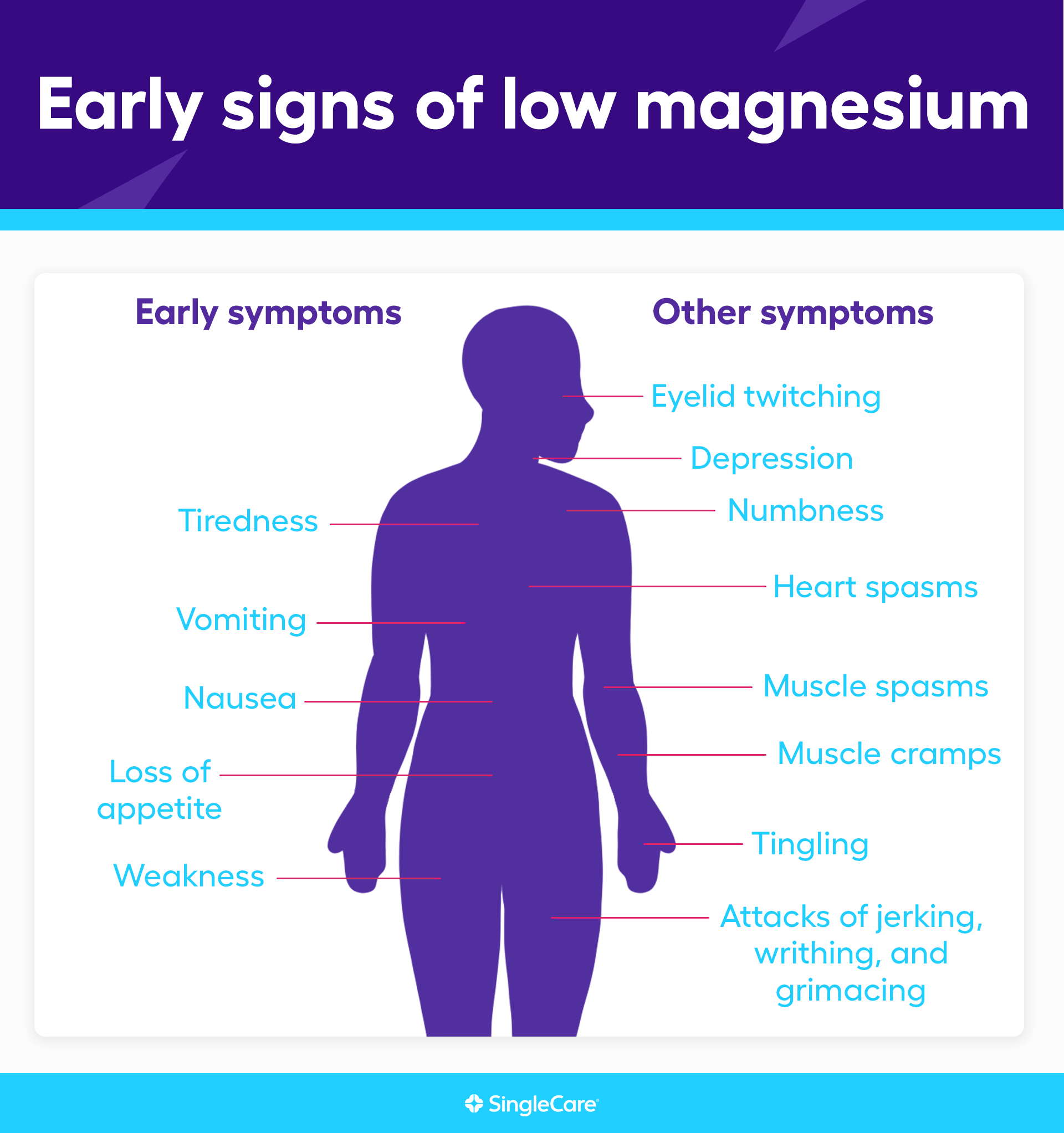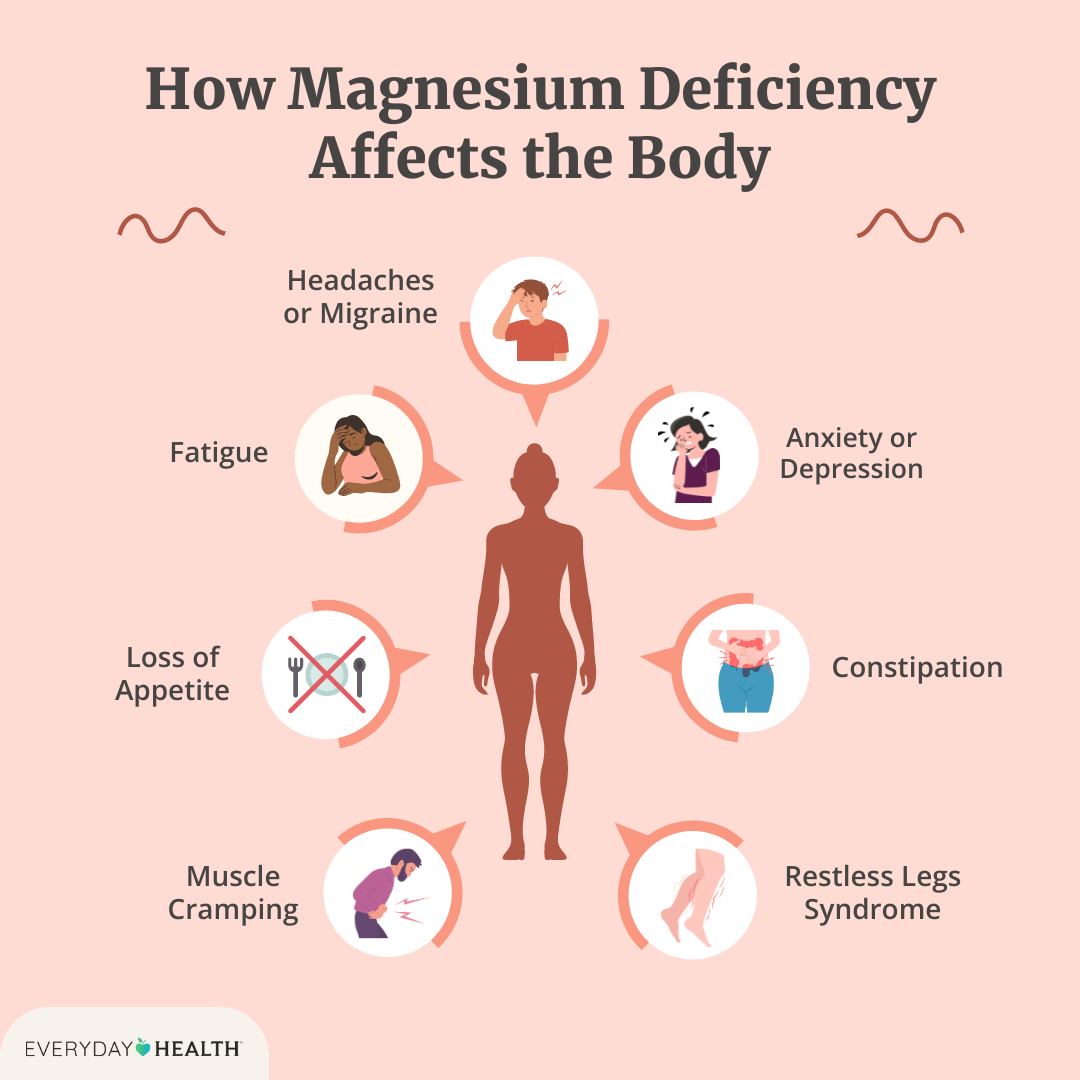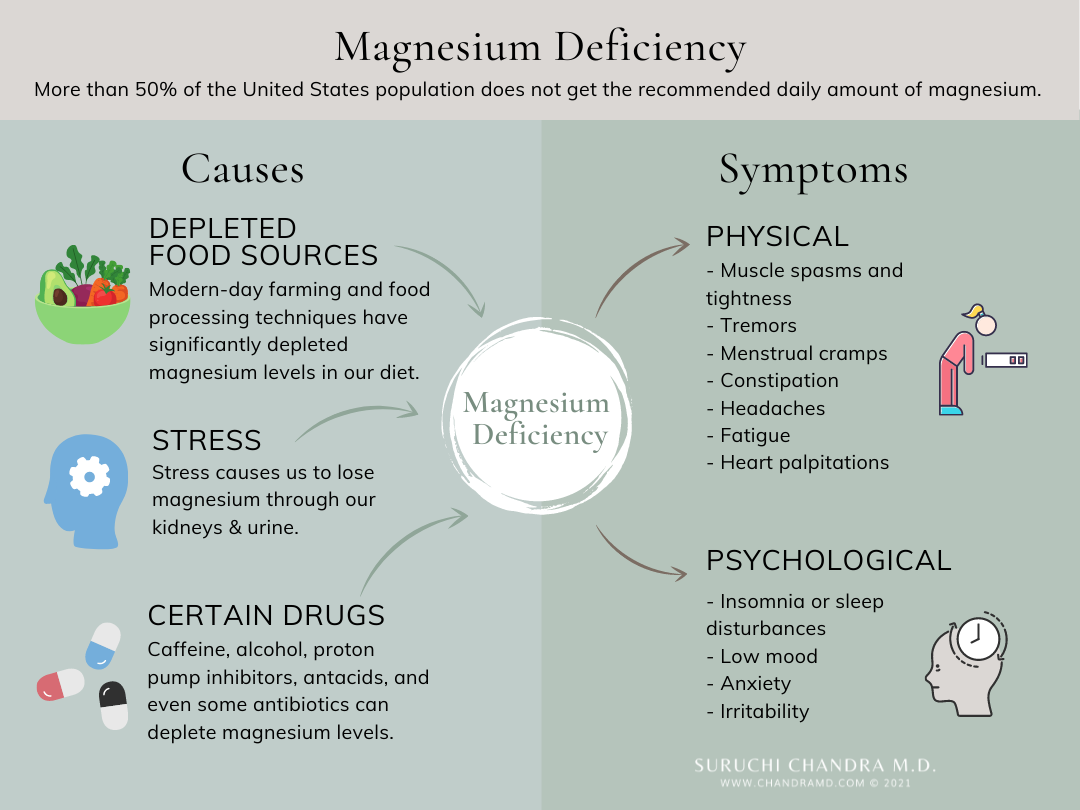Have you ever wondered what could happen if your body doesn’t get enough magnesium? This essential mineral plays a significant role in various bodily functions. When magnesium levels drop too low, you might notice some symptoms that can be both subtle and disruptive to your everyday life. Understanding these symptoms can help you take charge of your health.

What Is Magnesium?
Magnesium is a vital mineral that your body needs to function properly. It plays a crucial role in over 300 biochemical reactions in your body, including energy production, muscle contractions, and nerve function. Since the body doesn’t produce magnesium on its own, getting sufficient amounts from your diet or supplements is essential.
Sources of Magnesium
You can find magnesium in various foods. Here are some excellent sources to consider:
| Food Source | Magnesium Content (mg) per 100g |
|---|---|
| Spinach | 79 |
| Almonds | 268 |
| Black beans | 70 |
| Avocado | 29 |
| Dark chocolate | 327 |
| Whole grains | 126 |
| Pumpkin seeds | 262 |
Incorporating these foods into your daily meals can help ensure you meet your magnesium needs.
Why Is Magnesium Important?
The significance of magnesium extends beyond just keeping your muscles and nerves functioning. It’s also essential for maintaining bone health, regulating blood sugar levels, and supporting your immune system. Magnesium even plays a role in DNA and protein synthesis, making it crucial at the cellular level.
Daily Recommended Intake
Your daily magnesium intake can vary depending on your age and sex. Here’s a breakdown of the recommended dietary allowance (RDA):
| Age Group | Recommended Daily Intake (mg) |
|---|---|
| 1-3 years | 80 |
| 4-8 years | 130 |
| 9-13 years | 240 |
| 14-18 years (male) | 410 |
| 14-18 years (female) | 360 |
| 19-30 years (male) | 400 |
| 19-30 years (female) | 310 |
| 31 years and older (male) | 420 |
| 31 years and older (female) | 320 |
It’s always a good idea to align your intake close to these recommendations to maintain optimal health.
What Happens When Magnesium Is Low?
Low magnesium levels, medically known as hypomagnesemia, can lead to various symptoms. Your body may struggle to function correctly when it is not receiving enough magnesium. This deficiency can affect different organ systems in the body, leading to a wide range of issues.
Symptoms of Low Magnesium
Recognizing the symptoms of low magnesium is essential because they can often mimic other health problems. Here are some common signs to look out for:
1. Muscle Cramps and Spasms
You might experience muscle cramps or spasms if your magnesium levels are low. These involuntary contractions can be quite painful and can occur in your legs, arms, or even back. The deficiency may cause your muscles to become more excitatory, leading to these interruptions.
2. Fatigue and Weakness
Feeling tired constantly? Low magnesium can interfere with energy production in your body, making you feel fatigued or weak. If you find tasks that you used to accomplish easily now seem tiring, it might be worth checking your magnesium levels.
3. Nausea and Vomiting
Low magnesium may cause gastrointestinal issues such as nausea and vomiting. If your body lacks this essential mineral, it can upset your digestive system, leading to feelings of unease or discomfort in your stomach.
4. Mental Disorder Symptoms
Low magnesium levels have been linked to mental health concerns. You might experience anxiety, depression, or irritability. Magnesium is crucial for maintaining nerve function, and a deficiency can create an imbalance in neurotransmitters, leading to these feelings.
5. Abnormal Heart Rhythms
Magnesium plays a crucial role in heart health. If your levels are too low, you might experience arrhythmias—irregular heartbeats—or palpitations. This can feel alarming, so it’s essential to consult a healthcare professional if you notice any changes in your heartbeat.
6. Osteoporosis
Over time, low magnesium levels can negatively impact bone health. Magnesium helps with the structural formation of bones. A prolonged deficiency may lead to conditions like osteoporosis, where bones become fragile and more likely to fracture.
Other Possible Symptoms
Some additional symptoms you may experience include:
- Tingling or Numbness: Low magnesium can affect nerve function, resulting in sensations of tingling or numbness, especially in your extremities.
- High Blood Pressure: There’s a relationship between magnesium and blood pressure. Insufficient magnesium can lead to elevated blood pressure levels.
- Seizures: In severe cases, extremely low magnesium levels can lead to seizures, which is a serious symptom that requires immediate medical attention.
Who Is at Risk of Low Magnesium?
Various factors can increase your risk of developing low magnesium levels. Here are some groups of people who might be more susceptible:
1. Individuals with Gastrointestinal Diseases
People with gastrointestinal issues such as Crohn’s disease, celiac disease, or chronic diarrhea might absorb less magnesium due to their medical conditions, increasing the risk of deficiency.
2. Older Adults
As you age, your body’s ability to absorb magnesium may decrease. Additionally, older adults often take medications that can interfere with magnesium levels, further increasing their risk of low magnesium.
3. Those with Type 2 Diabetes
Individuals with Type 2 diabetes may have lower magnesium levels due to insulin resistance and increased urinary excretion of the mineral. This relationship can create a cycle of deficiency that is hard to break.
4. Athletes and Physically Active Individuals
If you lead an active lifestyle or are an athlete, you may burn through magnesium faster than typical sedentary individuals. Intense workouts can lead to loss through sweat, increasing your magnesium needs.
How Is Low Magnesium Diagnosed?
If you exhibit symptoms of low magnesium, a healthcare provider may recommend a few tests to confirm the deficiency. One of the common ways to diagnose low magnesium is through a blood test. However, it’s worth noting that about 60% of the body’s magnesium is stored in the bones, making it challenging to get a complete picture of magnesium status through blood tests alone.
1. Blood Tests
Blood tests measure the magnesium level in the serum. Generally, a normal serum magnesium level ranges from 1.7 to 2.2 mg/dL. Levels below this range can indicate a deficiency.
2. Urine Tests
Your healthcare provider may order a 24-hour urine test to assess magnesium excretion. This can help determine whether your body is getting enough magnesium from your diet or if there’s a problem with absorption.
3. Dietary Assessment
Additionally, discussing your dietary habits can be beneficial. By creating a food diary, your healthcare provider can examine your magnesium intake to see if changes in your diet might improve your levels.
How to Treat Low Magnesium
If you have low magnesium levels, the right treatment plan is essential. This may involve dietary changes, supplements, or lifestyle modifications.
1. Dietary Changes
To naturally boost your magnesium levels, consider incorporating more magnesium-rich foods into your diet. Aim for a balanced diet that includes the previously mentioned foods. If you’re unsure about your dietary intake, consider working with a registered dietitian for personalized guidance.
2. Supplements
Magnesium supplements are widely available in various forms, including magnesium citrate, magnesium oxide, and magnesium glycinate. It’s crucial to consult with your healthcare provider before starting a supplement, as they can recommend the most appropriate form and dosage for your needs.
3. Lifestyle Modifications
Incorporating lifestyle changes can also help maintain healthy magnesium levels. Regular physical activity, reducing stress levels, and ensuring adequate sleep can positively influence your overall magnesium status.

Preventing Low Magnesium Levels
Taking a proactive approach can help you maintain adequate magnesium levels and prevent deficiency in the first place. Here are some tips you can follow:
1. Eat a Balanced Diet
Focus on incorporating a diverse range of foods into your meals, including leafy greens, nuts, seeds, and whole grains. This diversity helps ensure that you get sufficient magnesium and other essential nutrients.
2. Consider Regular Check-Ups
Experiencing stress, gastrointestinal issues, or changes in your energy level could be warning signs. Regular check-ups with your healthcare provider can help monitor your magnesium status, especially if you’re at higher risk for deficiency.
3. Stay Hydrated
Hydration plays a vital role in maintaining overall health, including magnesium levels. Drinking enough water throughout the day helps facilitate the proper absorption of nutrients. It’s essential to stay well-hydrated, especially during intense exercise or hot weather.
Conclusion
Recognizing the symptoms of low magnesium is vital for overall well-being. By understanding the importance of magnesium, its sources, and the symptoms associated with low levels, you can make informed choices about your health. If you suspect you may have low magnesium levels, consider evaluating your diet, speaking with a healthcare provider, and implementing lifestyle changes to promote better magnesium status. Remember, taking care of your body today will pay off in the long run!
Discover Our Magnesium Products

